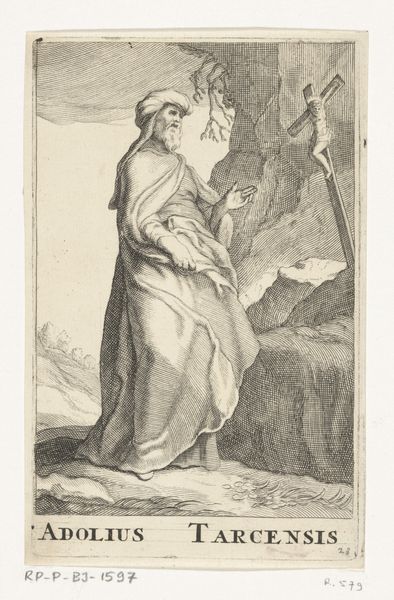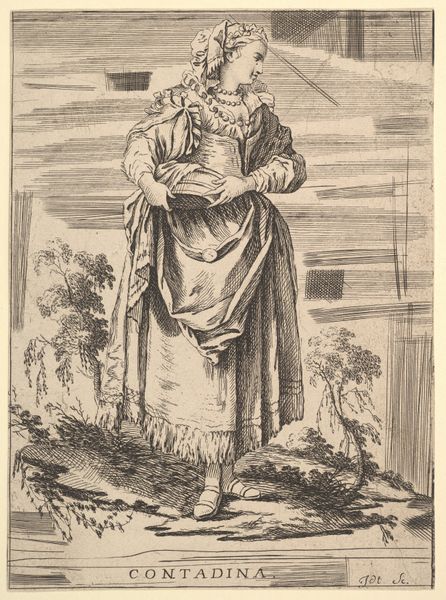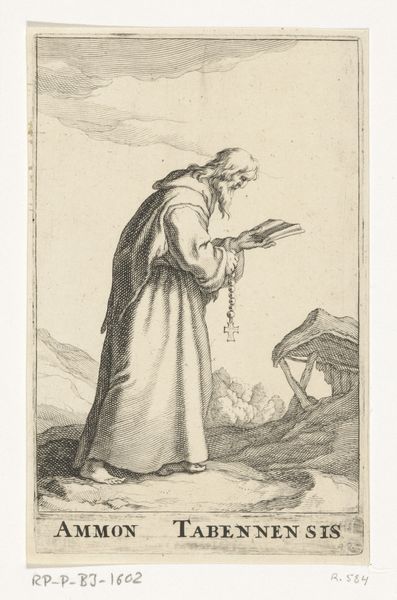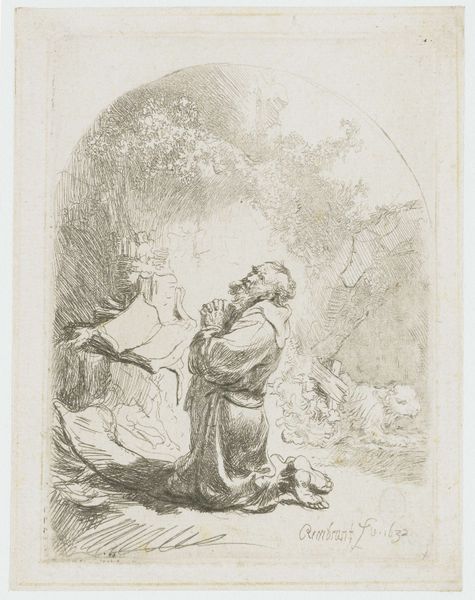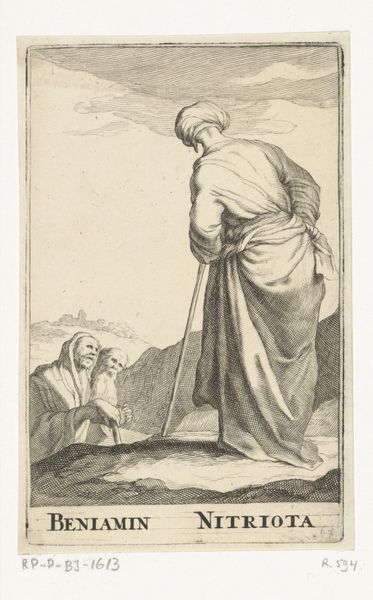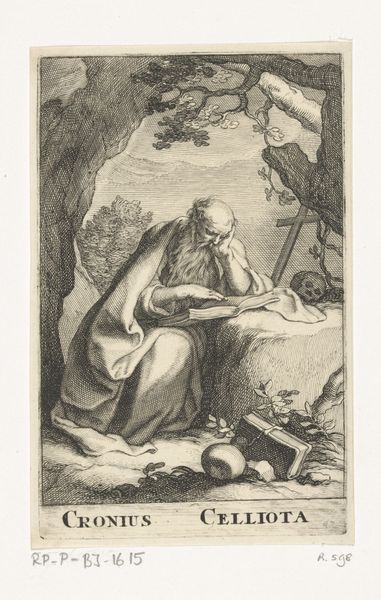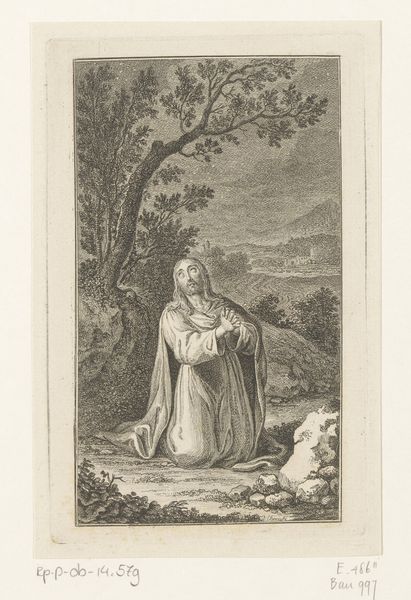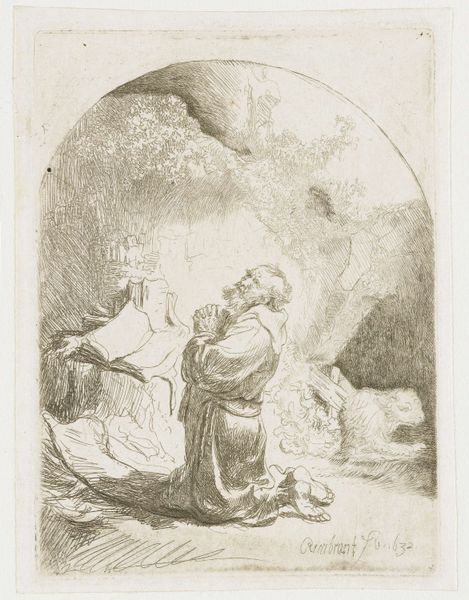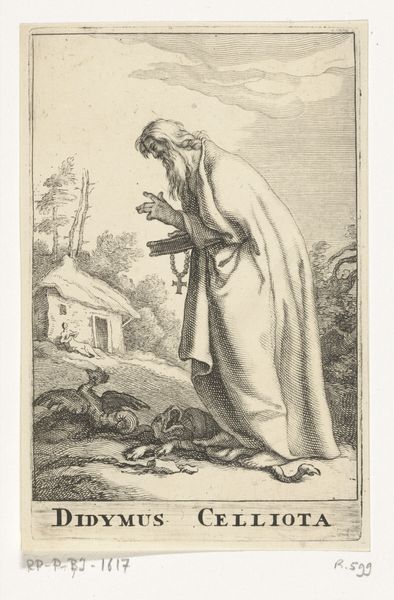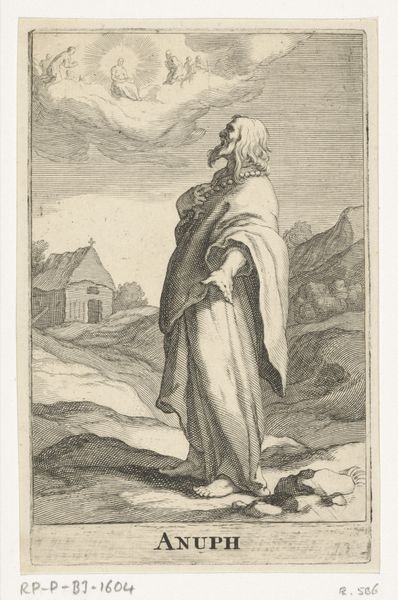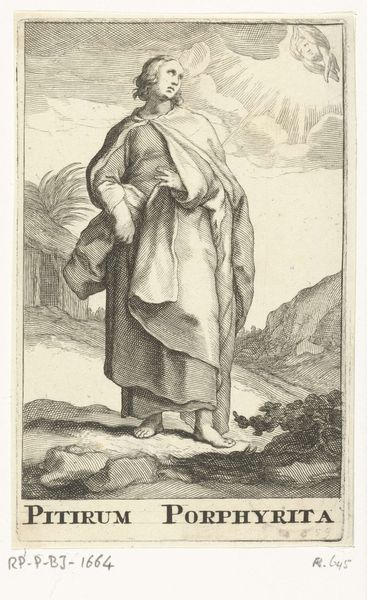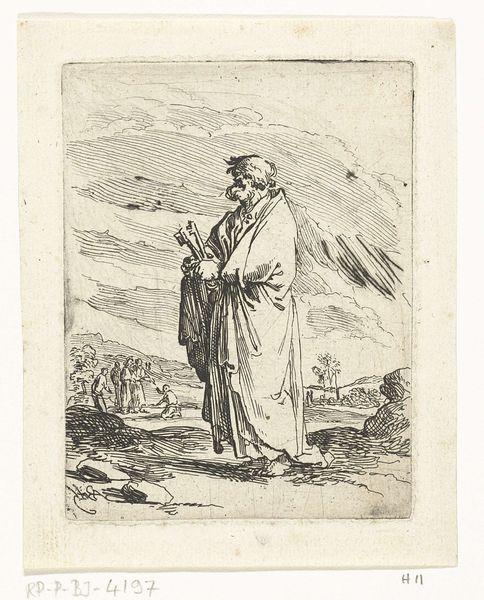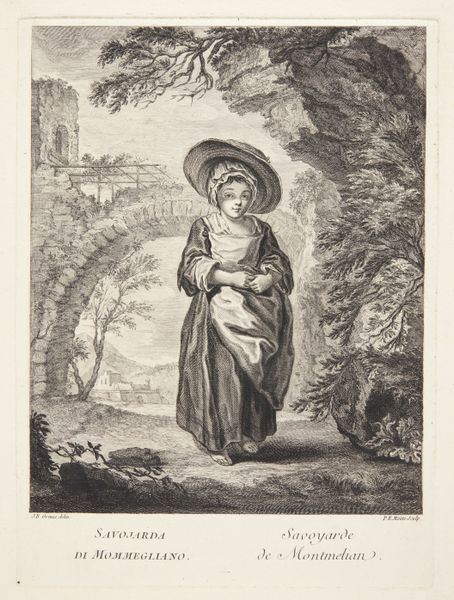
print, engraving
#
portrait
#
baroque
# print
#
old engraving style
#
history-painting
#
engraving
Dimensions: height 135 mm, width 85 mm
Copyright: Rijks Museum: Open Domain
Frederick Bloemaert’s Heilige Dioscorus van Nitria is a testament to the artistry of etching, made with metal and acid. Bloemaert would have covered a metal plate with a waxy, acid-resistant substance, then scratched an image into it with a fine needle. The plate was then immersed in acid, which bit into the exposed lines, creating grooves. The depth of these grooves determined the darkness of the lines in the final print. The plate would be inked, the surface wiped clean, and then pressed onto paper, transferring the ink from the grooves. This reproductive method allowed Bloemaert to circulate imagery widely, making images of piety accessible. This reflects a growing visual culture and the increasing commodification of religious icons. The meticulous, repetitive work behind the image is a reflection of broader social and economic shifts. The image reminds us of how so-called ‘fine art’ is always embedded in material conditions.
Comments
No comments
Be the first to comment and join the conversation on the ultimate creative platform.
